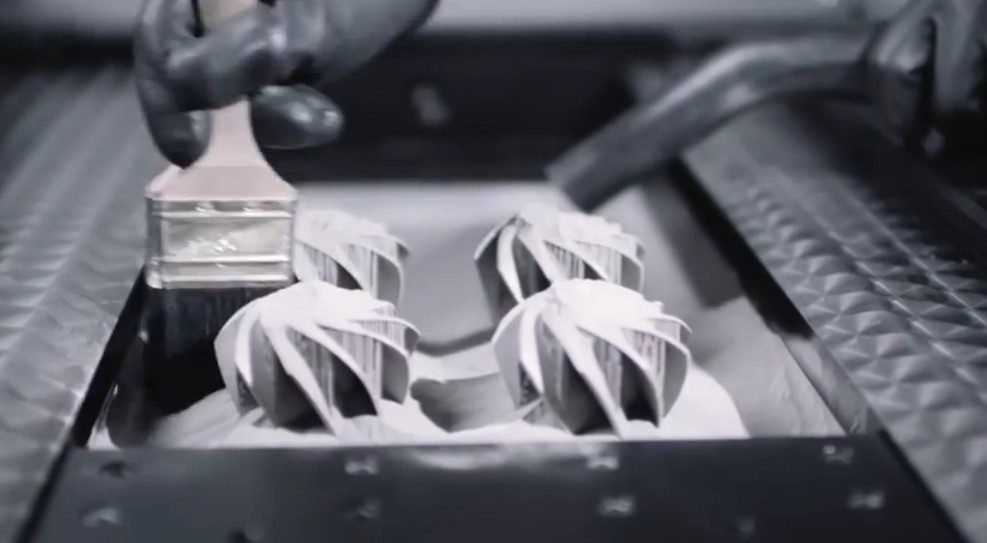I. Introduction
Selective laser sintering (SLS) has revolutionized the world of 3D printing and additive manufacturing. This innovative technology uses a laser to fuse powdered material layer-by-layer to build complex geometries and intricate designs. While SLS has been around for decades, recent advancements have unlocked new possibilities and applications for this technology. In this blog post, we’ll take an in-depth look at some of the most exciting and advanced uses of selective laser sintering today. From end-use part manufacturing to rapid prototyping, SLS is transforming industries from aerospace to medical devices. Read on to learn how companies leverage SLS to innovate products, streamline processes, and gain competitive advantages.
II. Understanding SLS Technology
- How SLS Works
The SLS printing process starts with a reservoir of powder material, usually nylon or other thermoplastics. A laser precisely fuses the powder in thin layers based on a 3D model slice. The print bed lowers, and a fresh layer of powder is applied on top. This process repeats until the full object is formed inside the powder bed. A key advantage of SLS is the support from the surrounding powder during printing, allowing for complex geometries without dedicated support structures. Precise temperature control is critical throughout the build process to maintain peak laser effectiveness.
- Materials Used in SLS
SLS accommodates a range of materials, with nylon and polyamide being the most common. Nylon provides excellent tensile strength, surface finish, and thermal resistance. Glass-filled nylon increases rigidity and heat deflection for functional parts. Aluminum-filled nylon allows for lightweight metal replacements. Other SLS materials include thermoplastic elastomers for flexible applications and composites like carbon fiber for added strength. Material choice depends on mechanical requirements, environmental factors, and accuracy needed.
- Design Considerations for SLS
SLS enables intricate designs not possible with traditional methods. However, certain design principles optimize results. Minimal wall thickness, internal channels, and enclosed voids should be avoided. Generous radii and tapers help reduce stress points. Angled surfaces rather than perfectly vertical improve powder flow during printing. Parts orient best on their back to prevent pooling of unsintered powder. Designing with SLS limitations in mind ensures reliably printable and functional parts.
III. Advanced SLS Applications
- End-Use Parts Manufacturing
From auto companies to consumer goods, SLS produces durable final parts for the most demanding applications. Nylon air ducts, enclosures, and housings withstand engine bay conditions in the automotive industry. Custom nylon brackets and components replace traditionally manufactured parts at a fraction of the cost. Even snap fits, living hinges, and assemblies can be printed in one go. Healthcare also benefits from sterilizable, biocompatible nylon components for equipment and instruments.
- Rapid Prototyping
SLS excels at building accurate prototypes quickly, making it ideal for research and development. Complex models come together within hours or days rather than weeks. Engineers can iterate rapidly through multiple design versions. Prototypes approximate the look, feel, and mechanics of final products thanks to SLS materials and precision. Automotive, aerospace, and consumer goods companies leverage SLS prototyping to accelerate innovation and shorten time-to-market.
- Tooling and Molds
Producing tooling via SLS minimizes lead times and costs versus CNC machining or molding. Lightweight nylon tools allow for earlier engagement with production processes while definitive tooling gets made. Conformal cooling channels printed into SLS molds boost plastic part quality and throughput. Even multi-part assemblies and collapsible cores are achievable, unlocking new tooling possibilities. The automotive sector in particular has adopted SLS tooling for concept vehicles, prototypes, and bridge tooling.
IV. Emerging Trends in SLS
- Large Format Printing
New large format SLS machines cater to oversized applications like aircraft interiors and architectural models. Build volumes exceeding one cubic meter accommodate long components. Companies capitalize on these giant printers to consolidate assemblies, light-weight structures, and reduce part counts. However, expanded build sizes introduce challenges like increased stresses and difficult powder dynamics that require finesse to master.
- Multi-Material Printing
SLS printers continue to gain capabilities for mixing and grading different materials within a single part. This paves the way for locally tuned material properties like flexible rubber grips on a rigid nylon handle. Even embedded electronics or thermal insulation integrated directly into printed parts are nearing reality as SLS multi-material tech evolves. The future possibilities span custom orthotics and prosthetics to smart products with integrated sensors.
V. Addressing Common Concerns
- Cost and Return on Investment
Upfront system costs for industrial SLS printers reach into the hundreds of thousands, while material and operating expenses add up over time. However, when incorporating part consolidation, increased functionality, and lead time reduction, SLS delivers outstanding value across long production runs. Patient-specific healthcare products and lightweight aerospace components simply cannot get made viably otherwise. Where high labor costs offset overseas manufacturing savings, domestic SLS production shines.
- Post-Processing and Finishing
SLS printed parts emerge encapsulated in powder, requiring removal and cleansing before use. Thermal, chemical or media vibratory finishing clear off residual powder and smooths surfaces. Some tools may still need machining or drilling to meet tolerance requirements. Draft angles and geometry considerations during design further reduce post-processing. With proper planning, post-processing can get streamlined to maximize efficiency.
VI. Conclusion
From rapid prototyping to end-use part manufacturing, SLS empowers engineers and designers to push boundaries and explore new possibilities. As the technology continues advancing, SLS promises to transform even more industries with its versatility, accuracy, and design freedom. Companies that leverage selective laser sintering stand to gain game-changing advantages over the competition. By understanding both the capabilities and limitations of this technology, its full potential gets unleashed to disrupt manufacturing as we know it.
